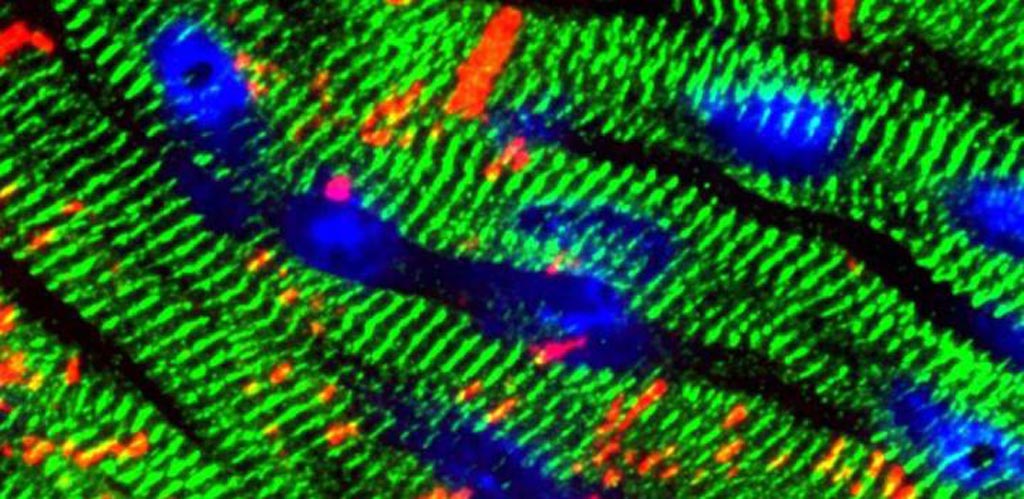Blood Test Identifies Heart Failure with Preserved Ejection Fraction
By LabMedica International staff writers
Posted on 12 Nov 2018
A test based on a protein biomarker found in the blood is the basis of a scoring system that distinguishes patients with clinical heart failure with preserved ejection fraction (HFpEF) from healthy individuals and patients with risk factors but no heart failure.Posted on 12 Nov 2018
Heart failure with preserved ejection fraction is a growing epidemic worldwide with a high burden of morbidity and mortality. Lack of understanding of the pathology and physiology of the syndrome has limited development of diagnostic tools to define and follow the disease progression.

Image: A photomicrograph of heart cells (Photo courtesy of Cedars-Sinai Medical Center).
Cardiac bridging integrator 1 (cBIN1) is a membrane-scaffolding protein in cardiomyocytes that organizes the dyad-containing microdomains at the transverse tubules that are responsible for the initiation and regulation of systolic and diastolic calcium transients. The level of cBIN1 is reduced in animal models of heart failure, as well as in human biopsy samples from patients with end-stage cardiomyopathy. Its blood availability makes it an attractive biomarker of cardiomyocyte remodeling.
Investigators at Cedars-Sinai Medical Center (Los Angeles, CA, USA) determined cBIN1 scores (CS) from ELISA measurement of plasma cBIN1 concentrations from 52 stable, ambulatory patients with HFpEF from age-matched and sex-matched healthy individuals and participants with heart failure risk factors but no HFpEF. The analysis examined the ability of the CS and N-terminal pro-B-type natriuretic peptide (NT-proBNP) results to differentiate among the patients.
Results revealed that the CS values were significantly higher in the patients with HFpEF than in the two control cohorts. For patients with HFpEF, the CS outperformed NT-proBNP when the comparator group was either healthy control participants or those with risk factors. Thus, the plasma CS, a marker of transverse tubule dysfunction, serves as a biomarker of cardiomyocyte remodeling that has the potential to aide in the diagnosis of HFpEF.
"By the time heart failure symptoms develop, the critical window for corrective therapy has typically closed," said senior author Dr. Robin Shaw, professor of medicine at Cedars-Sinai Medical Center. "Our discovery allows us to not only diagnose the disease sooner, but also to treat patients before that critical period of early intervention for lifesaving care has closed."
The study was published in the October 31, 2018, online edition of the journal JAMA Cardiology.
Related Links:
Cedars-Sinai Medical Center













